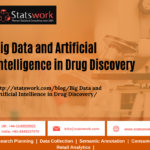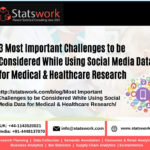Big Data Application To Predict Macroeconomic Indicators
Introduction
For quite a period, private agencies and government institutions are collecting and unifying information on several aspects of the economy, and over the period the opportunity of data collection has sufficiently grown, and therefore the quality of data has been enhanced. Nowadays, data are free to the general public on a daily schedule, nearly every day, new data become obtainable and are examined, remarked and construed. Monitoring of macroeconomic conditions has become the regular job of devoted economists at private institutions, banks, and government agencies, who scrutinize through big and complex data to refine all vital information.
Big Data Search

An
apt place for a calculation of the prospective welfares and expenses of the Big Data
use for macroeconomic prediction is the identification of the source. A
foremost source is signified not only by human-sourced information otherwise
known as Social Networks, which mainly explain to include social networking,
but also e-mails, internet searches, comments, blogs, videos, pictures, etc.
The allied data is roughly organized and frequently ungoverned.
Big
Data’s second key source is process mediated data, otherwise called as Traditional Business Systems (TBS). These developments track
and observe the interest of business events, like accepting an order, record
keeping of a customer, manufacturing a product, etc. TBS data is the massive
majority of what IT achieved and handled, in both business intelligence and
operational systems. Generally, designed and deposited in database systems can
be further assembled into data shaped by businesses and public agencies.
The
third source is the fast-expanding benefactor of Big Data, known as the Internet of Things (IoT). This data is derivate
from machines which are used to track and calculate occasions and progress in
the modern era. The concise way of data generated from the machine is apt for
computer processing, but its size demands the usage of new statistical
methodologies.
Looking
from the viewpoint of economic prediction, all these above mentioned three
types of Big Data are theoretically related. For instance, selected social
networks, IoT, TBS could all give relevant leading indicators for Gross
Domestic Product growth of a nation. So, a vital step for the usage of Big Data
for prediction is an arrangement of selected data, along with the features of
the targeted variable.
Designing Big Data strategy
We
can continue to implement and categorize once Big Data is once temporally
designed and well cleaned. This can implement several econometric procedures to
equalize the target indicator with variables of Big Data. After the
implementation, we can conduct sample cross-validation of the substitute
methodologies. A conjoint method for the ventilated data is to either execute
expectations or collect the data on the econometric models. Without any doubt,
these expectations are not valid, and aggregation of data leads to a loss of
data. So, Big Data econometrics is mandatory.
In
real-time, for monitoring macroeconomy and prediction with big data, Bayesian vector autoregression (BVAR) deals with a substitute modeling
framework. Vector auto regressions (VARs) are the most linear framework and are
broadly used in macroeconomics. In VAR
each and every variable hinge on its past and the outline of connection of the
forecast faults in different variables is left unrestricted. In BVARs, all the
variables are independent when combined with this high level of complexity. VAR model in economics has already been backed by the primary
exponents of these models. According to a recent study, it’s resulted that they
are firmly allied with factor models and are appropriate for the scrutiny of
big data. BVARs are also applicable for prediction since they can perform in a
space form letting for accessibly treating data with the help of filtering procedures.
This is a significant way of study since Bayesian inference delivers a coherent
model framework that can be misused to lessen the number and significance of
subjective choices like the transformation of data.
Conclusion
Generally, we tend to assure that
Big Data is appreciated in an exceeding nowcasting framework, not only to cut
back the errors but to boost the suitability, occurrence of release and scope
of data. The methodology developed during this article needs more extensions
and changes, for instance, to think about a lot of consistently the conversion
from filtering problems, unstructured to structured big data, many prediction
methods and Bayesian estimation, a lot of cautious real-time estimations, and
other methods to present the outcomes.
Even if the projected
architecture is common enough to be instigated with any technology, its
approval is not without any complications. To comment on some of them, the
combination of the architecture in the present organizational systems is a
perilous procedure to ensure the period of forecasts and nowcasts. The
implementation of the frameworks in an apt cloud computing situation so that
the operation can balance easily is also critical. As future work, we have a
strategy to implement the anticipated Big Data architecture to publish and
create real-time predictions and forecasts of some macro-economic models using
Internet data.
Learn More
- Online big data-driven oil consumption forecasting with Google trends, 2019, Lean Yu, Yaqing Zhao, Ling Tang.
- Big Data and Social Indicators: Actual Trends and New Perspectives, 2016, Enrico di Bella, Lucia Leporatti, Filomena Maggino
- Forecasting with Big Data: A Review, 2015, Emmanuel Sirimal Silva


 Previous Post
Previous Post Next Post
Next Post